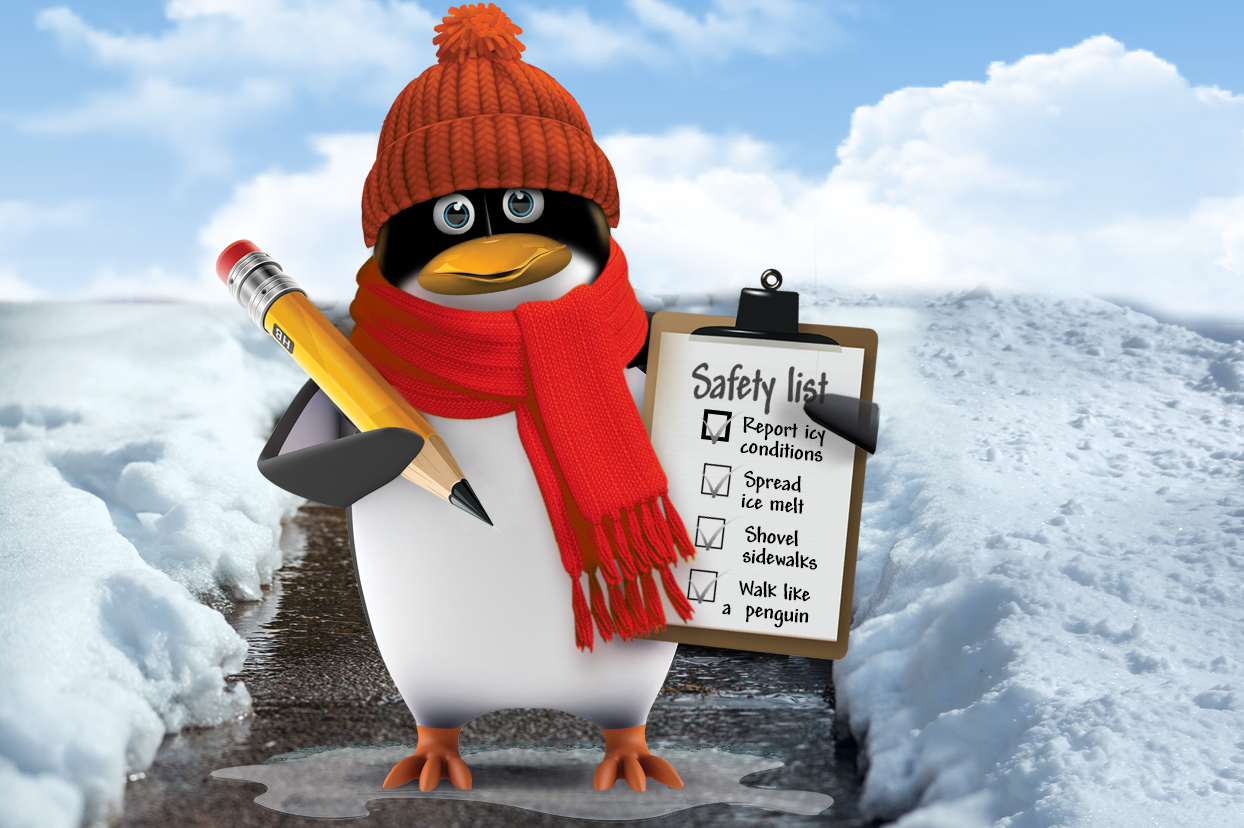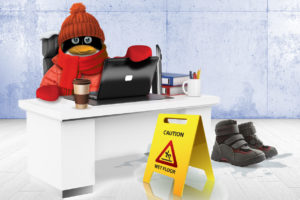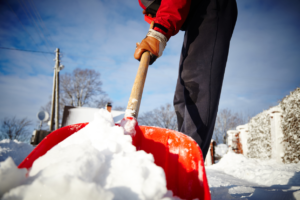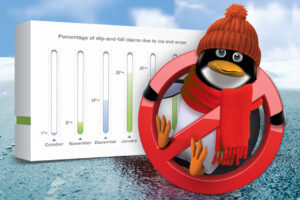March 7, 2019
Prevent late-winter slips and falls at the workplace
As winter ends and spring begins, cycles of melting and re-freezing can lead to dangerously slippery conditions.
Warmer days cause snow and ice to melt into pools and puddles, which freeze up again during the cooler nights.
Black ice is especially prevalent this time of year. This thin, nearly invisible coating of ice is caused when temperatures rise above freezing and quickly drop below freezing.
These conditions can put you and your employees at greater risk for slip-and-fall injuries.
How you can prevent slip-and-fall injuries
So, what can you do to prevent a slip-and-fall injury at work during this time of year?
Follow these tips:
- Monitor the weather and changing conditions so you know what to expect.
- Shovel and apply ice melt as necessary to keep walking areas clean and dry.
- Watch for areas where ice tends to form. Remove ice accumulations promptly and apply additional ice melt to prevent buildup.
- Place high-quality, beveled edge mats in walking areas subject to water or snow accumulation. Change mats regularly to ensure those in place are dry.
- Make your employees aware of the risk, and ask them to remain cautious whenever walking outside.
Train your employees on fall prevention
There’s a lot your employees can do to avoid slip-and-fall injuries, such as:
- Wear appropriate winter footwear.
Footwear should be well insulated and waterproof, and have a nonslip, thick sole and a wide, low heel. Ice grippers can also improve walking on ice or snow. - Use walkways that have been salted or shoveled.
Don’t take shortcuts over snow piles or in areas where snow and ice removal isn’t feasible. - Test your travel path for slickness.
Slide your shoe or boot on a path before proceeding. - Do the penguin shuffle.
Walk flat-footed. Take short steps to maintain your center of balance over your feet. Keep your head up and don’t lean forward. Walk slowly. - Step down, not out.
When getting out of your car, it's important to step down, not out. To do this, swing both legs out of the door, place both feet on the ground, flat footed. Grab onto the door frame or steering wheel to support you as you stand up. Use at least three points of contact, two feet and one hand. When stepping down from a curb, step flat footed off the curb to minimize your forward momentum. Don’t allow the leading foot to land heel-first.
Find many free winter slip-and-fall awareness and training resources including posters and videos on our winter slips and falls prevention page.
This is not intended to serve as legal advice for individual fact-specific legal cases or as a legal basis for your employment practices.





